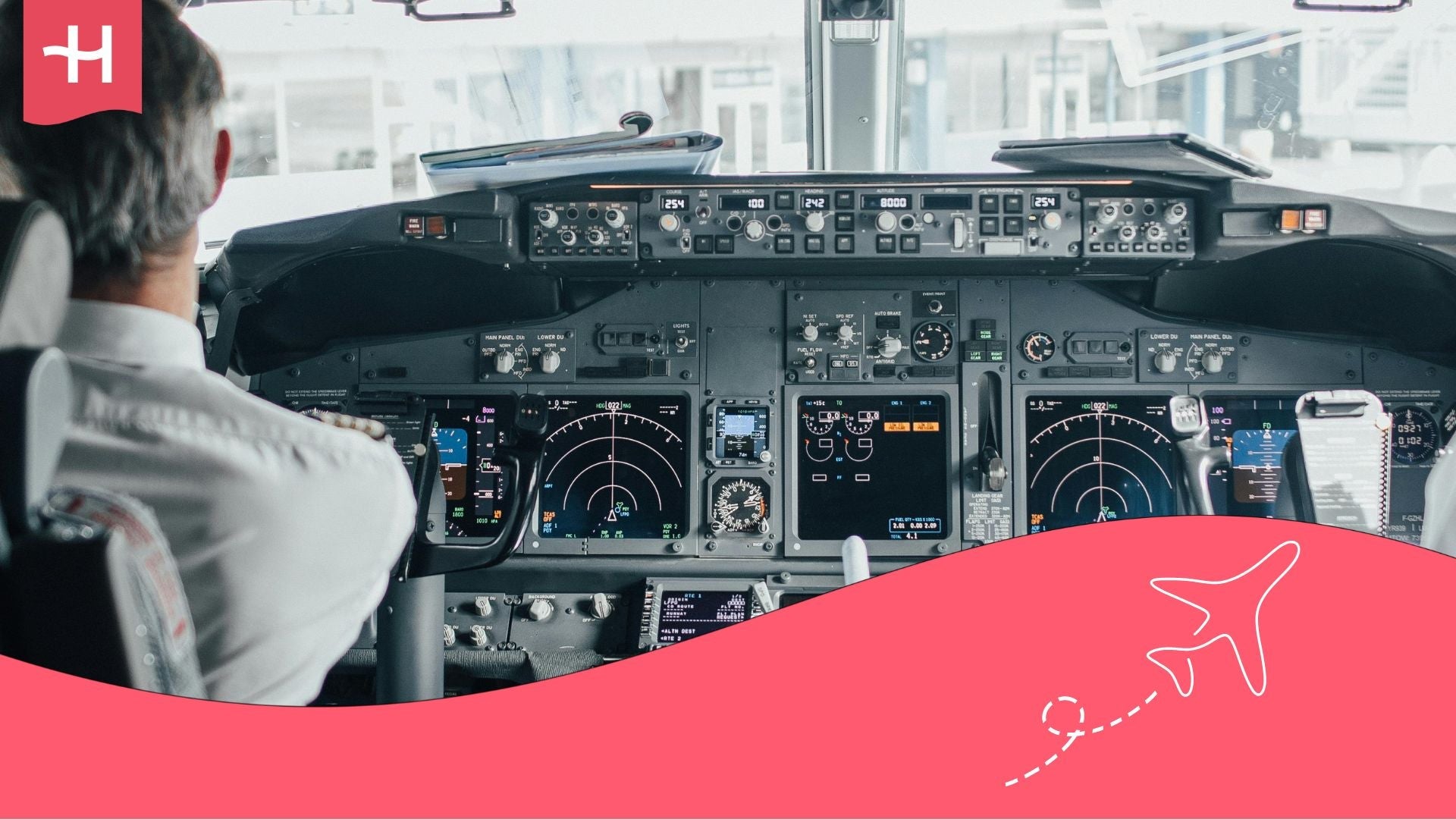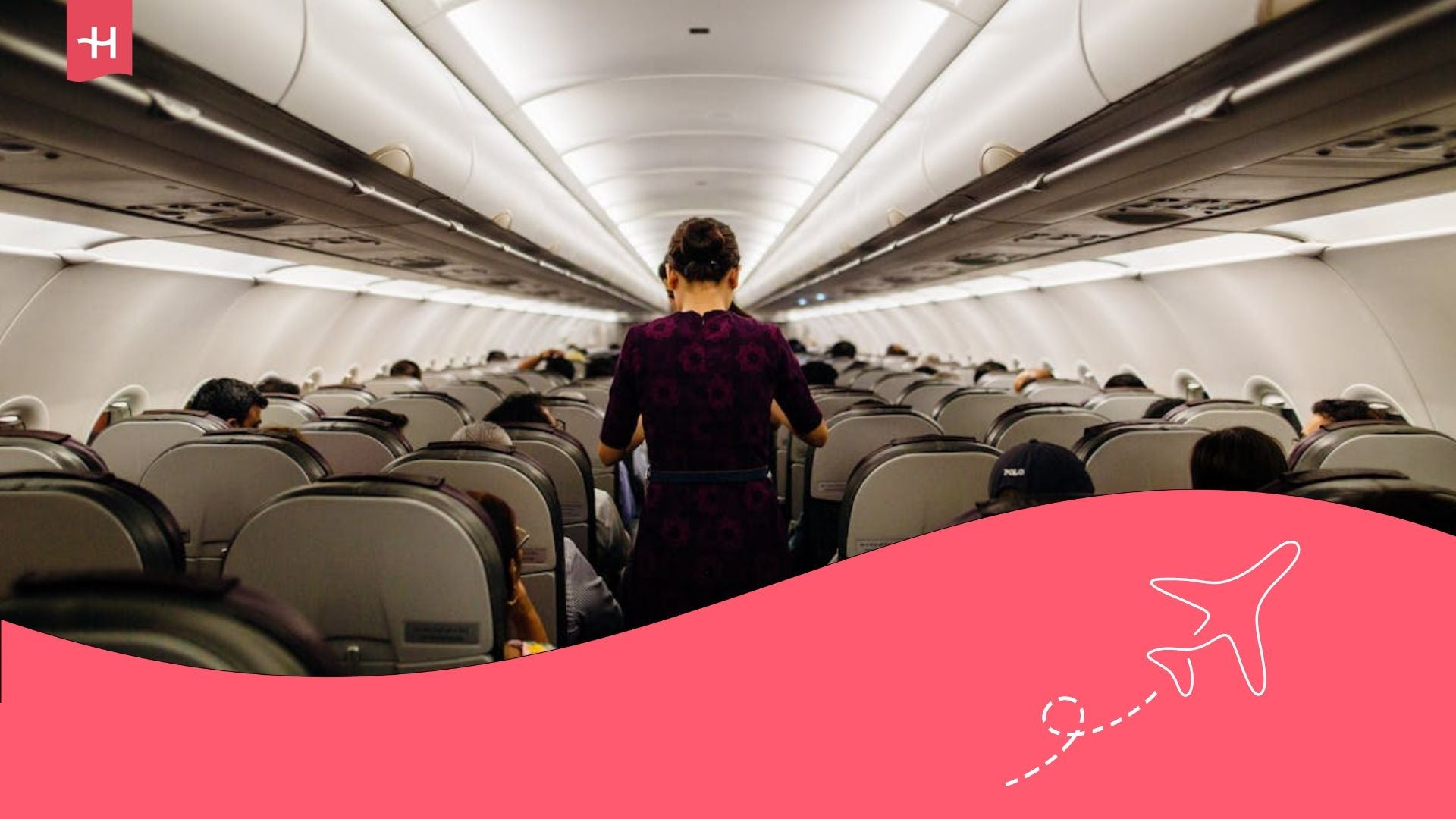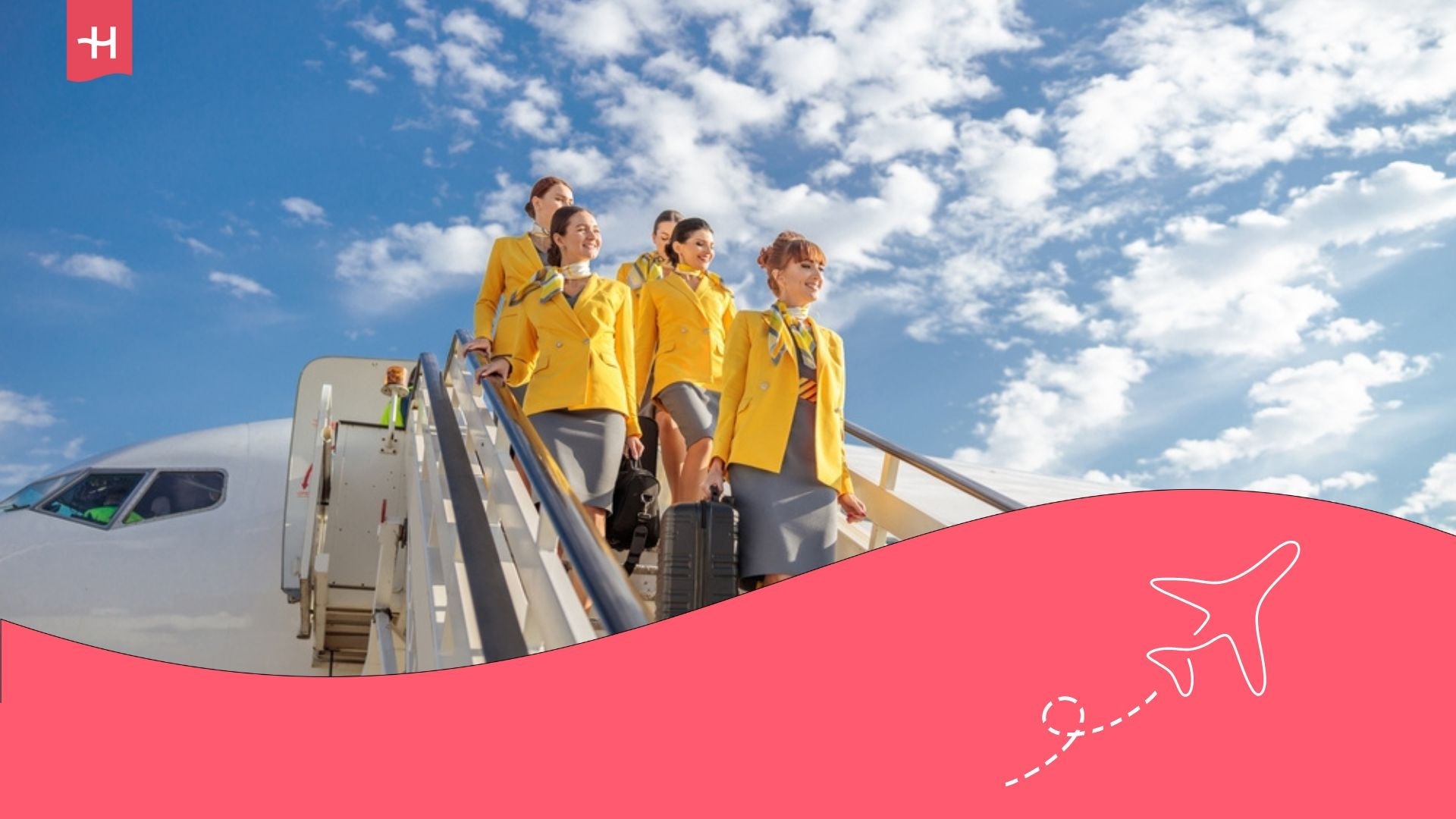How to create a CV for a flight attendant?
Discover how to create a cv a for flight attendant that highlights your skills and helps you land your dream job.
A CV is one of the most important tools you have when you are looking for a job, no matter the field. But when you are creating your flight attendant CV, remember that it is more than just a list of your experience and training, it is the first impression an airline will have of you.
In a profession where appearance, empathy, and attention to detail matter just as much as experience, a strong resume can be the difference between getting invited to an interview or being left out of the process.
If you are just getting started as a cabin crew or thinking about applying to a different airline, it is important to know how to put together a resume that really works for you. This guide will show you how to shape a polished flight attendant CV, what details are worth including, how to showcase your strengths, and what pitfalls to avoid. With the right approach, you can make your profile stand out from the crowd.
What should a flight attendant CV include?
If you dream of becoming a cabin crew, putting together your flight attendant CV is the first step. It might feel a little overwhelming at first, but the good news is that creating an appealing resume does not have to be complicated. Just like in any job, the goal is to show your potential, your training, and your professional attitude.
If you don’t know where to start, keep reading. Here we tell you which sections are essential and how to structure them step by step.
1. Personal and contact details
Start with the essentials: your full name, nationality, date of birth, a professional email address, and your phone number. If you have a LinkedIn profile, include it as well. Leave out any information that is not relevant, such as your marital status or full home address. Your city and country are enough.
2. Professional photo
Your photo is an important part of a flight attendant CV because personal presentation is a key aspect of the role. Choose a professional image with a neutral background and good lighting where your face is clearly visible. Dress neatly, ideally in a white shirt or something similar to a flight uniform. Avoid selfies, filters, or colorful backgrounds.
Keep in mind that your photo should give the impression of someone who is confident, approachable, and professional.
3. Professional profile
Include a brief summary of three or four lines describing who you are, your education, and your goals.
For example: “I am responsible, proactive, and service-oriented. I am looking to grow as a flight attendant with an airline where I can provide excellent passenger service and help ensure their safety.”
This section should show your passion and dedication. Avoid generic statements like “I love to travel” or “I want to see the world.” Focus instead on your professional skills and qualities.
4. Academic background and courses
If you have completed your Cabin Crew certification, include the school or institution and the year you earned it. This will give your CV extra weight. If you are still training, simply note it as “In progress” or “Expected completion 2025.”
You can also include other studies or courses relevant to the role, such as language classes, first aid, customer service, or emergency management. Airlines especially value candidates with training in English or onboard safety, even if they do not have prior experience.
5. Work experience (if applicable)
Having flight experience is not a requirement to apply. If you have worked in customer service, hospitality, tourism, or sales, include it. Briefly describe your responsibilities and highlight those that show your ability to interact with people, handle conflicts, and stay calm under pressure.
Remember that what matters most is not the position itself, but rather your transferable skills.
6. Skills and competencies
This section is your chance to showcase your personal strengths. Include abilities such as effective communication, empathy and patience, teamwork, organization and punctuality, language skills, and conflict resolution.
Use short, specific sentences. There is no need to fill the space with long descriptions; clarity always conveys more professionalism.
7. References or availability
If you have work references from a previous job, including them can strengthen your CV. If not, simply write “References available upon request.” Finally, mention your willingness to travel or relocate, as this is something all airlines check.
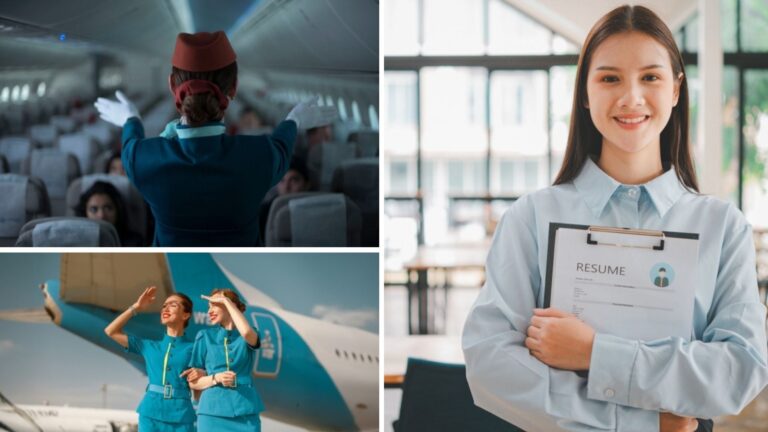
What are the most important skills to highlight on a flight attendant CV?
Being a flight attendant requires far more than just a polished appearance. Airlines are looking for people with both technical and interpersonal skills who can ensure passenger safety and comfort at all times. That’s why highlighting the right skills on your CV can make the difference between being seen as just another candidate or as a professional ready to take off.
When putting together your CV, focus on the skills that make you stand out. Then take a look at the qualities airlines look for and make sure to showcase any that apply to you.
1. Effective communication
Of all the skills a person can have, effective communication is perhaps the most important. Even if you have passed an international English exam, it will be of little use if you cannot communicate well with your fellow crew members or passengers.
The key takeaway is this: a flight attendant should always communicate clearly and with empathy, both with passengers and the crew.
If you have experience in customer service, conflict resolution, or teamwork that highlights this skill, be sure to include it on your CV. Airlines particularly value candidates who can listen well, stay calm, and maintain a positive attitude at all times.
2. Teamwork and cooperation
The success of a flight relies on teamwork among the entire crew, from the pilot to the flight attendants. Being cooperative, respectful, and adaptable are qualities that airlines notice from the very first interaction.
Including phrases on your flight attendant CV like “Experience working in multicultural teams” or “Ability to follow procedures and work well in fast-paced environments” can give you an extra edge.
3. Empathy and dedication to service
Great service is what defines a successful flight attendant. Handling passengers with care and understanding, even in challenging situations, shows professionalism and dedication. On your CV, highlight this by using action words like assist, support, or guide to showcase your proactive approach and attentiveness.
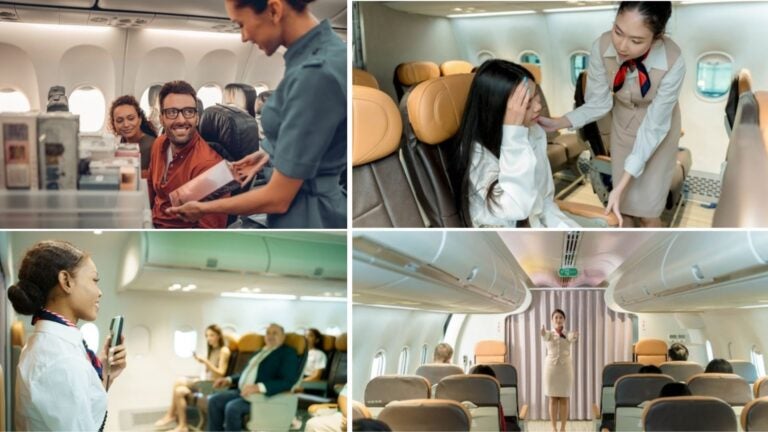
4. Stress management and decision making
Unexpected situations are part of life in the air, from turbulence and delays to anxious passengers. This is where a flight attendant’s role becomes crucial. Staying calm and making smart decisions under pressure is essential.
Airlines value the ability to handle pressure while staying composed. If you have training in first aid, safety, or emergency procedures, this is the place to highlight it.
5. Attention to detail and compliance with standards
Every task on board, from safety checks to meal service, needs to be carried out with care. Highlighting that you are organized, detail-oriented, and responsible will strengthen your professional profile.
You can include statements on your CV like “Strict adherence to safety protocols and standards” or “Ability to follow instructions and keep the cabin organized.”
6. Languages and intercultural communication
Language skills are among the most valued on a flight attendant CV. English is required by nearly all airlines, and fluency in a second language, such as French, Portuguese, German, or Arabic, can give you an edge. Be clear about your proficiency so there is no doubt about your language training.
- English: B2 / C1 (upper intermediate or advanced).
- Other languages: specify your level and whether you have any certifications (TOEIC, Cambridge, DELF, etc.).
Remember that communication goes beyond language. Airlines are looking for people who can interact respectfully and adaptively with passengers and colleagues from different cultural backgrounds.
7. Presentation and professional attitude
Finally, remember that your personal presentation matters. Being on time, looking professional, and showing a friendly attitude throughout the selection process can be just as important as the experience on your CV.
You can sum this up on your CV with a simple line: “Professional attitude, polished appearance, and a constant commitment to providing excellent service.”
How to create a flight attendant CV? Key tips
Building a flight attendant CV is more than just completing a form. It’s about presenting yourself professionally and showing why you would be an asset to the crew. Here are some practical tips to help you make a great first impression.
- 1. Tailor your resume for each airline: Each airline looks for something different in its crew. Some, like Emirates or Iberia, may value hospitality and presentation, while others focus more on discipline or language skills. Before submitting your CV, take the time to understand the airline and align your profile with its culture. This shows real professionalism and genuine interest.
- 2. Use a clear and professional format: Choose a clean, easy to read design with a clear structure. Avoid templates with bright colors or decorative fonts since simplicity is seen as professional in aviation. Save your file as a PDF and give it a clear name, for example CV_FirstName_LastName_FlightAttendant.pdf.
- 3. Highlight your achievements, not just your duties: Rather than simply listing your duties, highlight your accomplishments and measurable results. For example, “Managed service for over 300 passengers per flight with consistently high satisfaction” or “Supported internal safety training for crew members.” This makes your CV stand out from others that only describe the role.
- 4. Pay attention to wording and spelling: It may seem obvious, but even a small grammatical mistake can ruin a great first impression. Review your CV carefully before sending it, and if possible, have someone else read it as well. Clear and accurate writing shows attention to detail, an essential quality in this profession.
- 5. Keep your resume up to date: Every course, language, or new experience matters. Keep your CV up to date whenever you complete training or participate in relevant programs. Airlines appreciate candidates who are committed to continuous growth.
- 6. Add a brief cover letter: Even if not all airlines require it, a short cover letter of 8 to 10 lines can make a real difference. Use it to introduce yourself personally, explain why you want to work for that airline, and highlight your dedication to service and safety.
- 7. Prepare a digital version: Most airlines ask for CVs to be submitted online or through recruitment platforms. Always have a polished digital version ready to upload or send from your phone. Take the opportunity to keep your LinkedIn profile up to date and professional, with a photo that matches your CV and a description that reflects your career goals.
- 8. Check the file size and final details: A common mistake is sending a file that is too large or contains outdated information. Before hitting send, make sure your file is under 2 MB, your contact details are correct, and your photo is properly framed and high quality. Paying attention to these small details reinforces your image as organized and professional, qualities essential for any crew member.

What are the steps to creating a flight attendant CV?
As mentioned earlier, creating a professional flight attendant CV isn’t difficult if you know where to start. The key is to organize your information clearly, highlight your strengths, and pay attention to every visual detail. Below, we walk you through the process step by step so your CV reflects the level of professionalism airlines expect.
Step 1: Define the format and structure
Pick a clean, organized format that is easy on the eyes. Ideally, keep it to one page, two at most, with clearly defined sections such as personal information, professional summary, education, experience, skills, and languages.
Use a clear, easy-to-read font such as Arial or Calibri, and leave plenty of margin space so the text doesn’t feel crowded. The overall design should convey simplicity and balance.
Step 2: Write an attractive professional profile
Your professional profile is the first thing a recruiter will read, so it needs to grab their attention. In just a few lines, introduce yourself, summarize your experience or training, and explain what drives you to work in aviation.
Avoid using generic statements and instead focus on highlighting your dedication to service, sense of responsibility, and commitment to passenger safety.
Step 3: Include your education and certifications
List your education and highlight if you have completed or are working toward the Cabin Crew Certificate. Include any extra training like languages, customer service, first aid, or onboard safety, as these show you are prepared for the role and eager to keep developing your skills.
Step 4: Detail your work experience
If you have previous experience as a flight attendant, start with your most recent role, noting the airline, types of flights, and your main responsibilities. If you don’t have experience in the field yet, don’t worry. You can include jobs in tourism, hospitality, sales, or customer service, emphasizing tasks that involved working with people or resolving conflicts.
Remember to use action verbs like assist, coordinate, serve, ensure, and communicate. They make your CV feel more dynamic and professional.
Step 5: Highlight your skills and language level
Set aside a section for your personal and technical skills, such as communication, teamwork, punctuality, empathy, and the ability to work under pressure. Clearly state your language proficiency as well.
- English: C1 (advanced)
- Portuguese: B1 (intermediate)
- French: Basic
If you have any international certifications, include the name of the exam, such as TOEIC or Cambridge. Airlines place a high value on candidates who speak multiple languages.
Step 6: Pay attention to the visual presentation
Your CV should look organized and professional. Include a formal photo with a neutral background and good lighting so your face is clearly visible. A friendly smile conveys approachability and confidence, two key qualities for the role.
Stick to neutral colors like white, gray, or navy, and avoid busy backgrounds or distracting designs. Your CV should convey the same elegance and calm professionalism expected of a flight attendant.
Step 7: Review, correct, and save the file
Take a moment to check your CV carefully before you send it. Make sure the text is clear, consistent and well presented, since even a small mistake can affect a first impression. Save it as a PDF with a professional file name, and if you are submitting it by email, use a simple subject line and add a brief introduction in the message.
Step 8: Prepare a digital version and a cover letter
In a fully digital world, online CVs have almost completely replaced printed ones. That is why it is important to keep a digital version of your CV ready to upload to job platforms or to share quickly by email or messaging apps.
If the application process allows it, include a short, personalized cover letter with your CV. Use it to explain why you’re interested in joining the airline and to highlight the strengths you bring to the role.
Where can I download flight attendant resume templates?
If you are getting ready to build your flight attendant CV and want it to look sharp right away, using a template can make the process much smoother. It helps you structure your information neatly and gives your CV a fresh, professional look that can help you stand out in a crowded selection process.
Some solid options include Canva, which has both free and paid layouts with dedicated sections for your photo, languages, and experience; Google Docs and Microsoft Word, which offer simple templates that are easy to adjust; and sites like Resume.io or Zety, where you can build your CV online and download it as a PDF in just a few clicks.
If you prefer a more visually polished CV, Adobe Express has elegant templates you can customize to match your profile. Focus on keeping the design simple, the text clear, and the layout balanced. In aviation, how you present yourself matters, and a clean design always communicates professionalism.
Flight attendant CV example
Below, you can see a sample flight attendant CV that follows the recommendations outlined in this guide. The template features a clean layout with well-defined sections, neutral colors, and a professional photo.
Notice how it organizes the key information such as profile, experience, education, languages, availability and skills in a clear and balanced way, conveying the professional image every airline expects.

How can you connect to the internet as a flight attendant?
Being a flight attendant involves a lot of travel, sometimes visiting several countries in a single week. In this situation, having reliable internet is not just handy but essential. Whether you need to check updated schedules, coordinate layovers, or stay in touch with family, a stable connection becomes an important part of daily life.
This is where Holafly’s monthly plans come in. They are designed for professionals who travel frequently and need internet access in multiple countries without worrying about roaming charges or physical SIM cards. With these plans, you can enjoy unlimited data in over 170 destinations, with no contracts and no need to swap cards when you land.
Holafly Plans is made for professionals who are always on the move, like flight attendants and cabin crew, who need to stay connected even between flights. With this service, you get a reliable connection and instant activation on your phone, without relying on airport WiFi or unsecured networks.
Staying connected all the time doesn’t just make your job easier; it also helps you stay close to family, friends, and your routines off the plane. With Holafly, you can travel knowing that no matter where you are, your internet connection will always be reliable.
Important: If you are a frequent traveler and want to stay connected without worrying about expensive roaming or looking for a new SIM at every destination, Holafly’s subscription plans are for you. With a single eSIM, enjoy internet in more than 170 countries for a fixed price and no surprises on your bill. Travel without limits and connect easily and securely! 🚀🌍

Frequently asked questions about flight attendant CVs
Ideally, your CV should be one page, or two at most if you have international experience or additional training. Airlines value resumes that are clear and well-structured, making it easy to spot your key strengths quickly.
Yes. In most cabin crew selection processes, a professional photo is required. It should have a neutral background, good lighting, and present a polished, friendly image, similar to a corporate headshot. Avoid selfies or using filters.
If you don’t have direct flight experience, emphasize your training, mindset, and skills that can be applied to the role. Backgrounds in customer service, tourism, or hospitality are also valuable. The main goal is to show your commitment to service, reliability, and teamwork.
It is not recommended to send the same CV to every airline. Each company has its own idea of the ideal crew member, so it is better to tailor your CV to match the culture of each airline. Adjust your professional profile, choose a photo that fits, and emphasize the details that align with their values.
The most common mistakes include using casual email addresses, adding irrelevant information like marital status or personal social media, making spelling errors, or sending overly large files. It is also important to avoid cluttered designs or unprofessional templates.





 Language
Language 


















 No results found
No results found



